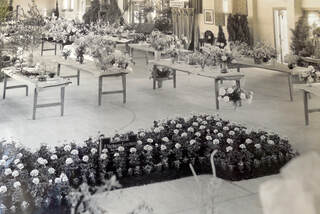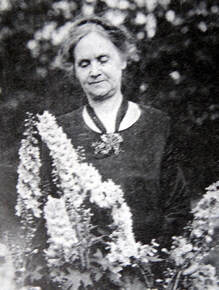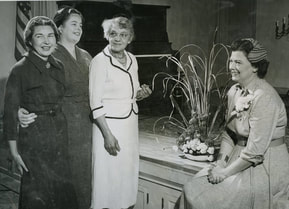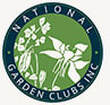 First flower show, 1929
First flower show, 1929
WGCF: Then & Now
The Wisconsin Garden Club Federation has promoted the love of gardening, floral design and service to communities through education, civic beautification and environmental projects for many years.
The Beginnings
The Wisconsin Garden Club Federation has promoted the love of gardening, floral design and service to communities through education, civic beautification and environmental projects for many years.
The Beginnings
- 1865 – First garden clubs in Wisconsin were part of the Horticultural Society.
- 1923 – Clubs are scattered around Wisconsin. These clubs met in Lake Geneva to hear a presentation by Mrs. Frederic Fisher, president of Illinois Federation Garden clubs.
- 1928 – Wisconsin Garden Club Federation organized. Officers: President, Mrs. R. Malisch, Vice President, Mrs. C. W. Vaughn, Secretary/treasurer, Mrs. A.W. Sperber. Clubs included: Beloit, Delavan Lake, Elkhorn, Hales Corners, Kenosha, Madison, Milwaukee, Sum-Mer-Del, Waukesha, and West Allis.
- First Convention held December 1928 at the Milwaukee Public Museum.
- 1929 – First state flower show held in Madison at Hotel Loraine.
- Fourteen clubs in the Federation: Jefferson, Racine, Pierce County, Kenosha, Hawthorne, Milwaukee County Horticultural Society, Waukesha, West Allis, Elkhorn, Superior, Hillcrest, Oshkosh and Madison Garden Clubs.
 Carol E. Strong was instrumental in organizing WGCF.
Carol E. Strong was instrumental in organizing WGCF.
The 1930s
- 1931 – Flower arrangement school held at the Milwaukee Art Institute, later called judging schools.
33 clubs and 1,222 members
Mrs. Malisch, member of the Hawthorn Garden Club, 1 WGCF President, became the NCSGC (now NGC) 4th Vice President for the term 1931-1933. - 1932 – Caroline E. Strong is recognized by the Wisconsin State Horticultural Society for her devotion to the cause of amateur horticulturists, inspiring in them a love of plants, flowers, and a more beautiful out-of-doors. She helped organize many garden clubs in the state.
State was divided into Milwaukee, County, Waukesha County, South Central Wisconsin, Eastern Wisconsin, Fox Valley, and Northern Wisconsin districts. There were no definite boundaries; the chairmen of the districts were elected by the Board of Managers. - 1933 – Several junior clubs participated in flower shows.
- 1935 – The Seal of the Federation was chosen by the Executive Board.
- 1936 – A school for judges was held in the Milwaukee YWCA. A fee of $1.00 was charged and 127 attended.
- 1938 – WGCF becomes involved with the Wisconsin State Fair and their exhibits occupied most of the horticultural building.
- 1939 – WGCF sponsors a school children’s forest project. Wisconsin children donated pennies to plant the 1,200 acre Children’s Forest in the Nicolet National Forest. This was the start of Penny Pines.
 WGCF Officers: 1953-54 1st VP – Mrs. George Swearingen, Treasurer – Mrs. Norman J. Rowe, 2nd VP – Elsie Lautenbach, President Mrs. D. F. Stilling
WGCF Officers: 1953-54 1st VP – Mrs. George Swearingen, Treasurer – Mrs. Norman J. Rowe, 2nd VP – Elsie Lautenbach, President Mrs. D. F. Stilling
The 1940s
- 1941 – Milwaukee Garden Clubs made Christmas wreaths, garlands, and sprays for the hospital at Camp McCoy.
- 1944 – The National Scholarship Program was established. The first scholarship given was for $600.
- 1945 – WGCF proposed to lower youth delinquency by sponsoring junior garden clubs, to double food production, to aid communities by establishing garden centers and to help in the support of the memorial highway project and the war service program.
First observance of National Garden Week was in April 1945.
The Blue Star Memorial Highway Program was started in October 1945. The proposed north-south route though Wisconsin was Highway 51. - 1946 – WGCF president, Mrs. John West commented ‘The keynote of this administration was sounded at the convention of our Federation when the group requested its new president appoint a committee to bring the Constitution and By-laws up to date. Dues were 75 cents, 5 cents to National Council, 20 cents to the Federation and 50 cents to the Wisconsin Horticultural Society. The fiscal year began January 1.
- 1947 – The World Gardening program has its beginning with the “Seeds for Peace: project”.
The National Council BULLETIN was redesigned and renamed The National Gardener. - 1948 – Two judging schools were held in one year, one in Milwaukee and one in Wausau.
- 1949 – The WGCF Achievement award was begun. It is to be presented at each state convention to clubs or club members who have made an outstanding contribution to horticulture, to conservation, to the promotion of gardening or who have done distinguished civic work in making permanent improvement for public betterment.
First “Handbook for Flower Show Schools” published to aid in standardizing judging schools. Mrs. F. J. Fitzgerald as Editor and Mrs. John West as Co-editor, both former state presidents.
- 1950 – First series of Nationally Accredited Flower Show Schools was completed. Seven judges completed the series. The Bronze Medal Award was started to be awarded to a non-member for outstanding work in Conservation or Horticulture. State Dues were increased to $1.00.
- 1951 – The Federation sponsored a series of Garden Clinics. They were held at vocational schools in larger cities.
- 1952 – The Silver Anniversary Convention was held Oct 1-2 at the Loraine Hotel in Madison. Seven clubs were added bringing the total clubs to 98 with 2,900 members. The Wisconsin Judges Council was organized.
- 1953 – State dues were raised to 25 cents with 10 cents going to the Magazine Fund and 15 cents to the General Fund. The Northwest District was too large; it was divided into the Coulee District and the Superior District.
- 1954 – State dues were increased to $1.25 with 80 cents for the magazine, 35 cents to state budget and 10 cents to National Council for dues. Six issues of Wisconsin Gardens were published, each issue to have 4 more pages. To avoid a loss, $200 in advertising would be needed for each issue.
- 1957 – Thirty-two members attended the Trees for Tomorrow Camp at Eagle River.
- 1958 – The Appreciation Fund was started to permit voluntary contributions of 5 cents each year by members for the purpose of giving a National Council Life Membership to the State President. Mrs. Charles DuBios of Madison was appointed state Landscape Design Chairman.
- 1959 – Mrs George Swearington was installed as our first Region Director from Wisconsin.
- 1960 – Permanent notebooks were distributed to all state chairmen containing their duties and helpful suggestions.
- 1961 – Mrs. A. J. Shafer elected president. Total of 509 registered for the 35th Convention held in September in Madison. The Federation had five delegates on the Wisconsin Roadside Council.
- 1962 – National Council increased dues to 25 cents. WGCF dues increase was to $1.50: 80 cents to Wisconsin Gardens, 45 cents to the General Fund and 25 cents to National Council. WGCF President should receive full expenses to National Conventions and Central Region Meetings plus a postage allowance. Treasurer and First Vice President are allowed $100 for expenses each. Each state chairman had an allowance of $10 for expenses.
- 1963 – The Lydia Shafer Award was established in memory of Lydia, a former state president through a donation from her husband.
- 1964 – Mrs. John West (Ruth) received the first Lydia Shafer Award.
- 1965 – Wisconsin Roadside Council celebrated its 25th anniversary. The Federation played a major role in the “Keep Wisconsin Clean and Beautiful” campaign.
- 1966 – The First Landscape Design School Series was held Oct 18-20 in Madison. Eleven Clubs received Civic Development Awards through Sears, Roebuck & Co. District was divided into the Wisconsin Valley and the Fox Valley Districts
- 1967 – WGCF hosted the 38th National Convention June 4-8 at the Pfister Hotel in Milwaukee. The package plan was $85. State Life Memberships were activated for a fee of $50. Permanent district boundaries were established bring the total to eight: Coulee, Fox River, Indianhead, Madison, Milwaukee, South Central, and Wisconsin Valley.
- 1968 – A Memorial Fund with interest being used for projects in the state rather than constantly asking for contributions was established. At close of convention there were 22 charter WGCF Life Members.
- 1969 – Judges Council Schedule Award for the best written flower show schedule written was started.
- 1971 – WGCF donated $500 for the Nature Center at the Ridges Sanctuary in Bailey’s Harbor. WGCF is a life member of “The Ridges Sanctuary”
- 1972 – WGCF was declared Tax-exempt under Section 501©(3). The fiscal year was changed to April 1 to March 31 with the annual meeting to be held in the spring.
- 1973 – A donation of $500 was given to the Todd Wehr Center to establish the WGCF Library and/or Permanent Visual-aid Exhibits.
- St. Croix District was formed.
- One thousand dollars was allocated to landscape a unit at “Old World Wisconsin” at Eagle.
- Mrs. H. B. (Irene) Reese was installed as Central Region Director.
- St. Croix District was formed.
- 1974 – Operation Wildflower was introduced by National Council to focus bringing native wildflowers to our highways.
- The first Federated Flower Show School was sponsored. Previously flower show schools were sponsored by clubs or districts.
- 1975 – The first Memorial Service honoring departed members was held at the close of the Convention morning business session.
- 1976 – The Scholarship and Memorial Funds were combined to become the WGCF Memorial Scholarship Fund.
- 1978 – Eighty-seven garden clubs contributed $3,000 to the Cedarburg Bog, an American Land Trust project.
- Doris Swartz and Marie Pluemer became Nationally Accredited Flower Show School Instructors.
- 1979 – The convention was changed to the fall.
- The first Gardening Study School was held in Madison.
- 10 acres donated to the International Crane Foundation by WGCF.
- The Kuether District Membership Award, a traveling trophy, was accepted to be awarded to the District having the greatest percentage of increase in memberships.
- The first Gardening Study School was held in Madison.
- The 1980s
- 1980 – WGCF assisted The Nature Conservancy in acquiring 120 acres of the Chiwaukee Prairie.
- 1982 – Clubs were invited to provide scholarships to attend the Nature Adventure Camp at the Environmental Station located near Amherst Junction.
- 1984 – Environmental Seminars, “Days of Discovery” were held at several sites across Wisconsin.
- To Celebrate Arbor Day, 117 copies of “Wisconsin’s Famous and Historic Trees” were distributed.
- $4,000.00 contributed to the International Crane Foundation for the Preservation Prairie.
- 1985 – WGCF contributed over $1,200 to support the restoration of “Lady Liberty”.
- The Dandyliners accepted recipes for the recipe book, “Please Don’t Eat the Daisies”.
- A new simplified WGCF Logo included a wood violet and was designed by Elton G. Kraft of Lake Geneva.
- The Dandyliners accepted recipes for the recipe book, “Please Don’t Eat the Daisies”.
- 1986 – The Larkin Life Membership Award was created to be given to the district having the greatest increase in Wisconsin Life Memberships.
- The Doris Swartz Award was created to be presented to the Club having the most outstanding Design Program for the club year.
- 1987 – A 3-year project to raise $10,000 to assist Olbrich Botanical Society in a major expansion. This was to be site for WGCF permanent storage with an office.
- Kitty Larkin was installed as Central Region Director.
- 1988 – Operation Wildflower included planting four or five areas along Highway 51 with the Wisconsin Department of Transportation.
- 1989 – The “And Then Some Award”, a VIP Award, was presented to Margaret Doornink.
- 1990 – Membership dues were increased to $6 per year. Member-at-Large Dues $10. Ruth West donated $10,000 to the support of WGCF. This established the Ruth and John West Educational Endowment Fund
- 1991 – NGC Convention held at the Hyatt, Violet Dawson of IL was installed as NGC President.
- 1992 – First NGC Environmental Studies School was held at Mosquito Hill with Julie Schoenike as Chairman.
- Number of issues of Wisconsin Gardens reduced from six to four.
- Ivy League Garden Club installed Blue Star Highway Marker in the Sheboygan Veteran Memorial Park near Highway 23.
- Number of issues of Wisconsin Gardens reduced from six to four.
- 1993 – Lenore Landry, Oak Wilt Chairman, worked with Wisconsin DNR and U-W Extension to fund and provide educational materials, slide presentations, handouts and displays about Oak Wilt.
- 1994 – The WGCF office at Olbrich Gardens was taken over by the staff of Olbrich Gardens. WGCF historic documents were moved and stored in boiler room.
- 1995 – The Nancy Gotham Endangered Species Award was approved.
- 1996 – Ten garden clubs received PETALS incentive grants from Shell Oil Company for a total of $4,350.
- The WGCF fiscal year was changed to June 1 to May 31 to be in sync with NGC.
- 1997 – Tammy Raiten created a database of WGCF members to be maintained by the membership secretary.
- 1998 – Eleven garden clubs applied and received $2900 incentive grants from Shell Oil Company.
- In recognition of Irene Straus, the Olbrich Garden Club donated $18,000 to be invested in a special fund for scholarships.
- 1999 – The silver bowl for the Lydia Shafer Award was changed to a Waterford crystal bowl.
- The Treasurer’s books were computerized.
- 2000 – Dr. Edward R. Hasselkus, curator at the Longenecker Gardens in Madison received the NGC Award of Excellence.
- 2001 – Monies in the Memorial Scholarship Fund were granted to the Community Foundation in the Fox River with 5% of the increase from the principle to be used annually for scholarships. Barbara Wesley was installed as Central Region Director. Wisconsin Stars, a book about our favorite flowers, was published.
- 2002 – Pat Dvorak Yearbook Theme Award was offered for the first time. Shell Oil Grants (eight clubs, a district and a state ) were received for a total of $3.500.
- 2003 – Dorothy Nelle Sanders Small Standard Flower Show Award, fifty dollar award to be given to the Small Standard Flower Show earning the highest evaluation annually was started. The $50 Wisconsin Life Member fee is to be used for scholarships. WGCF Life Members are required to pay dues.
- 2004 – Excel program was purchased for WGCF Treasurer. Raffle of quilt created by Reba E. raised $6,000 for NGC 2005 Convention.
- 2005 – Kitty Larkin installed as NGC President at NGC Convention, “Come…See…Let Your Spirit Soar!”, was held in Milwaukee May 20-22.
- 2006 – Thirty clubs gained Group Tax Exemption Status. Gerianne Holzman became editor of Wisconsin Gardens changing the format. Blue Star Marker installed in Elm Grove.
- 2007 – Tri-Council was formed. Membership included all Landscape Design Consultants, Gardening Study Consultants and Environmental Studies Consultants and students. Blue Star Memorial Highway Marker was rededicated at the Rothschild Village Hall November 11. Blue Star Marker installed at Wood National Cemetery, Wood, Wisconsin. WGCF dues were increased from $4 to $10.
- 2008 – Motion was made to purchase “Power Point equipment and software.”
Complete 75 Year History
WGCF District History
|
|

The Wisconsin Garden Club Federation founded in 1928 is a charter member of the National Garden Club organization. As an organization, we are proud of our heritage of developing relationships with fellow gardeners, learning, and gardening for good in our communities.
|